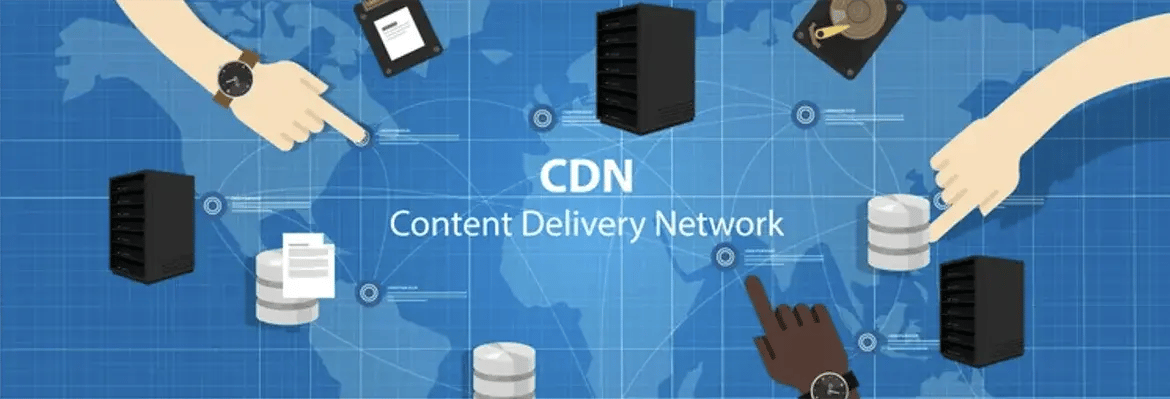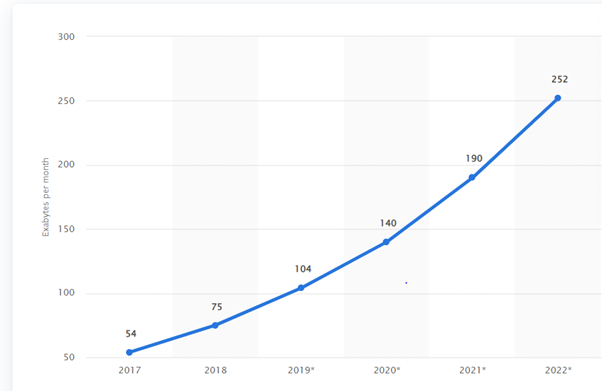Is It Time for You to Replace Your CDN (Content Delivery Network)?
Date: 13 January 2022

Businesses use their online presence to attract clients around the world. They often use pictures, videos, and interactive resources to keep their visitors engaged. Delays in website load-time create a frustrating user experience, which could mean the loss of potential customers.
This issue can be fixed with a CDN. CDNs, otherwise known as Content Delivery Networks, are the conduits of the internet. They work behind the scenes to reshape the way online information is consumed, enhance the user experience, accelerate web traffic, and give every website the chance to go worldwide.
While implementing a CDN stands to offer many benefits, security remains a top concern as it handles more dynamic or sensitive content.
What is a CDN?
A CDN (Content Delivery Network) is a geographically distributed set of servers that work in unison to ensure the internet content is delivered as fast as possible. CDNs allow for speedy transfer of assets that are required for the loading of internet content such as HTML pages, stylesheets, videos, JavaScript files, and images.
Business Benefits of CDNs
A few important benefits of using CDNs for businesses include:
- Improving the load times for websites - Visitors will experience much faster page loading times because the use of a nearby CDN server (as well as other optimizations) means that content is distributed closer to website visitors
- Reduction in the cost of bandwidths - One of the main expenses for websites is bandwidth consumption costs. With optimizations including caching, CDNs can cut down on the amount of data that origin servers have to provide. Thus, reducing the costs of hosting for website owners.
- Assured content availability - Normal website function can be interrupted by hardware failures or unusually high traffic. However, because of their distributed nature, CDNs can withstand hardware failures and cope with more traffic than in the case with most origin servers.
CDN Security Risks for Businesses
Inevitably, a form of technology that has such an ability to create seismic changes on this scale is going to come with challenges for businesses. CDN security becomes the top concern for website owners as vulnerabilities in CDNs expose them to a wide range of cyber-attacks or even ransomware attacks. As you assess your CDN strategy and associated costs, it’s crucial to understand how to make an expense report that details these expenditures. This will help you manage your budget effectively while ensuring you’re investing in robust security measures.
CDN services are continuing to grow in popularity. Most web traffic is now being served via CDNs including all traffic from the biggest sites such as Amazon, Facebook, and Netflix.
According to Statista, the traffic to CDNs is projected to reach 252 EB (Exabytes) per month in 2022. This surge in traffic makes CDNs the target of hackers who are keen to steal sensitive information.

Many industries are dealing with internal struggles about CDN security requirements for the future and on how to ensure they can achieve them. The common type of attack targeting a CDN is a DDoS attack (Distributed Denial-of-Service attack), which could be from SSL-based, Dynamic Content, or Direct IP attacks.
1. SSL-based DDoS attack
This attack targets the victim’s SSL handshake mechanisms. The impact of this encrypted DDoS attack is way higher than clear-text attacks. To detect as well as mitigate this attack, the CDN server needs customers’ SSL keys to decrypt the traffic. If customers are not willing to share their SSL keys, then the malicious traffic is redirected to the customer’s source, leaving them vulnerable to SSL-based attacks.
2. Dynamic Content Attack
Since the dynamic content is difficult to cache, attackers take advantage of it. As requests for dynamic content are directed to the origin server, hackers hijack this functionality and generate attack traffic. CDN servers redirect this malicious traffic to the origin server, which overwhelms the origin server’s capacity to handle the requests. By blocking the request-pathway for authenticated users, the attack-traffics generate a DoS attack.
Many CDNs can limit the number of requests to dynamic servers, but they can’t distinguish bad traffic from the legitimate ones. Therefore, we need a next-generation WAF (Web Application Firewall). It can block the malicious requests while enabling you to offer undistributed services for legitimate users.
3. Direct IP Attack
Hackers can even target web applications, which are serviced by the CDN by executing a direct attack on the IP address of the customers’ web servers. This is mostly a network-based flood attack like ICMP or UDP flood attack. Volumetric traffics, which are not routed through CDN services, directly hit the customer servers and take down their online services.
Rethinking CDN for Future Security Demands
Internal development and engineering teams, on one side, are predisposed to believe that their existing CDN is scalable and flexible enough to cope with increasing demands.
On the other side, the security teams believe that the only way to have a successful CDN in the future is to adopt a Single-Stack platform. It streamlines the performance of applications via the optimized delivery of content with a single-secure workstream.
Such an option would result in a radical shake-up of the culture by making content delivery and security much simpler but would also make business sense.
This debate has made several large organizations rethink their future CDN needs and undergo a critical examination of the benefits of changing their CDN.
Towards a Most Secure CDN with AppTrana
From the above discussion, it is, therefore, not particularly surprising that many large enterprises have begun to think about replacing their CDN and getting in touch with the most trusted name in the business, to do so.
AppTrana from Indusface is the most secure CDN in the industry and guarantees an instant improvement in website performance while offering a fully managed risk-based application protection.
There are several key features that AppTrana will bring to an organization, including:
- WSA (Whole Site Acceleration) technology. It provides great speed and carrier-grade resistance, ensuring instantly accessible content from all over the world
- Eliminating worries about page loading times, multi-device worldwide delivery, and traffic spikes
- Reducing latency thanks to the fourth-biggest tier IP backbone
- Eliminating concerns about the speed being compromised for the sake of protection
- Fine-tuning by experts for a fully managed CDN to guarantee the best possible performance
Conclusion
Organizations need to focus on what outcomes they are hoping to be able to achieve. Instead of making comparisons between micro-features in different CDN options, companies need to put their entire focus on making sure the performance of applications is never compromised by security.
An organization’s CDN needs to be capable of delivering a positive result for stakeholders throughout the entire enterprise, including developers, operations, and security. Replacing an old CDN with a new improved version such as AppTrana is the best way to prepare your business for the challenges of the future.



